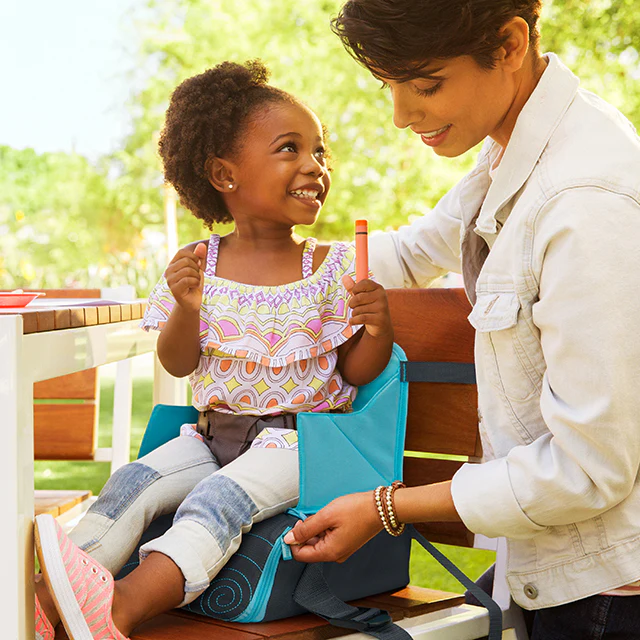So your energetic toddler is almost a pre-schooler. And they’re outgrowing pretty much every item of clothing you’ve bought them recently. That and their car seat you’ve been wrestling them into since they could walk. Time to crack that wallet open again and invest in a brand new spanking booster seat. Here’s the best bit… No more twisted harnesses. And no more pesky Isofixes. Hallelujah!
But what exactly is a booster seat and how is it different from other car seats? We’ve done the hard work for you and pulled together the ultimate guide to booster seats. Here goes…
What are booster seats?
Booster seats raise your little one’s seating position and unlike the forward-facing seat your tot has just outgrown, there are no integral harnesses. Instead, children perch themselves on the boosters and are fastened in using the car’s seat belt.
Why is this safer than just using the seat belt?
Without doubt, fastening your child onto a booster seat at the correct age is a far safer option than just using a seat belt. It all comes down to tried-and-tested clever designs. Ultimately a booster ensures a seat belt fits a child correctly. And secondly, they provide extra protection to a child’s back, neck and head in the event of a collision. No brainer.
Can three year olds sit in booster seats?
Unlikely. Car seats always go off weight rather than age which obviously hugely varies from kid to kid. And just to complicate matters, they are split into different groups.
Group 2 boosters are for children 15 – 25 kgs (33 – 55 lbs), roughly 4 to 6 years old. Groups 2 and 3 are for children weighing 15 – 36 kg (33 – 79 lbs), around 4 to 11 years old, and are adjustable with an integral harness for when they are smaller, moving to the car’s seat belt when they are larger.
If you want to, you can go all out with a Group 1, 2 and 3 combination seat, which start from around 9 months and can evolve until they are 12 years.
What should I look for when buying a booster seat?
Firstly make sure it’s high-backed. Backless boosters are still on the market but they’re not suitable until your child weighs more than 22kg or is taller than 125cm. The high back gives more protection to your child and means they can be designed with side wings to shield the head from injuries.
The boosters must also have slots at shoulder height and waist height to weave the seat belt through so it remains in the correct position. Many also have adjustable back or head rests which are handy when your little darlings go through yet another growth spurt.
How should I fasten my child in safely?
Boosters really are a godsend, especially as there’s now no need to fiddle around with Isofixes and twisting harnesses. Once your child is sat down, hook the diagonal part of the seat belt into the shoulder height slot and the lap part of the belt into the lower slot, usually under the booster seat’s armrests. Just make sure the belt is worn as tightly as possible. That the lap belt goes across the pelvic region, not the stomach. And the diagonal strap rests on the shoulder, not over the neck. And you’re all set.
How long should they sit in a booster seat?
For a long time. The law states that children must use a car seat until they are 12 years old or 135cm tall (4.5ft) – whichever comes first. And naturally, at this point, must always wear a seat belt.
Is there another type of booster seat?
Yes! The term booster seat is also used for those nifty little chairs for on-the-go dining. You know, when you turn up at a lovely pub but there are no highchairs and you can’t face chasing after your toddler for an hour? These are the solution to your problems.
And the Munchkin Travel Toddler and Child Booster seat, £34.99 is an ultra-portable, ultra-stylish seat you can fasten to chairs without worrying about them slipping off. Made up of a strong and stable internal frame, it fits children aged 12-36 months, folds up easily and includes storage for all those nappies and wipes and toddler bits and bobs.
Interested in more baby and toddler advice? Simply head to our blog or check out our StrollerCoaster podcast.

Leave a Reply